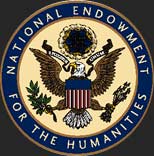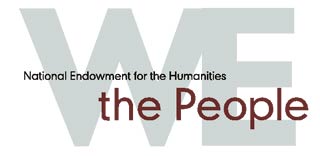Lessons
Lesson for Core Concept #9: Documents about the Boston Massacre and the Biases of their Creators
Maria DiGioia, Graduate Education Intern, Tufts
Documents reflect the personalities, perspectives and agendas of their creators.
Description
This lesson has been designed using documents related to the Boston Massacre, but it can be adapted to other topics as well. Since the optional long-term assignment will involve the study of documents from other events from The Coming of the American Revolution website, presentations can be scheduled to coincide with the class periods when those events will be discussed.
Duration:
1-2 class periods + 1 long-term assignment (optional)
Length of class can be adjusted depending upon length of discussions.
Goals: students will understand that…
- the biases of the creator intentionally or unintentionally affect every document created
- different creators will produce different accounts of the same event based on their own motivations, interpretations and perspectives
- documents promoted for public consumption often promote a specific agenda
Materials
- The Coming of the American Revolution website
- Computer and Internet Access
- Projector or Handouts to show engraving of Boston Massacre attributed to Paul Revere
- Document Analysis Worksheet
- Excerpts from:
- Tories Strike First
- A Sinister Plot?
Procedure
Student preparation prior to class:
Students should read the following two documents from The Coming of the American Revolution website.The Boston Massacre
Tories Strike First
See pages 19-21 (images 17-19 in sequence)
A Bloody Massacre
The Bloody Massacre perpetrated in King Street, Boston on March 5th 1770 by a party of the 29th Regiment
View Document
Transcription of poem only
Introduction:
Begin class by projecting or distributing copies of the engraving attributed to Paul Revere entitled, The Bloody Massacre perpetrated in King Street, Boston on March 5th 1770 by a party of the 29th Regiment.
Using the Questions to Consider from the website as a guide, ask the students to describe what they see:
- What does this scene depict?
- Describe the background scene in this engraving. What buildings do you see? What time of day is it?
- How many soldiers do you see in the engraving? How would you describe their behavior?
- How many townspeople do you see in the engraving? How would you describe their behavior?
- What title does Revere give his engraving? Do you think it's an appropriate title?
Transition to a discussion of the homework by asking the students how this image compares with the documents they had read the previous night. Which account does this image best represent? Why would someone create a picture like this?
Distribute the Document Analysis Worksheet to each student. Using the worksheet as a guide, lead a class discussion to analyze each of the documents, and ask the students to record their responses. The teacher can record important notes on the chalkboard or whiteboard.
- What is the style of writing used in each account? Why?
- What are the similarities and differences between the two accounts?
- What can you guess about the author of each document?
Group Activity:
Divide the class into four groups. Assign each group a different reading packet. Reading packets should include the transcription of one of the following documents, accompanying introductory essay from The Coming of the American Revolution website, and a brief biography of the author (where applicable).
The Boston Massacre
Reading Packet 1: (Tory)
Tories Strike First
See pages 5 -9 (images 3-7 in sequence)
Reading Packet 2: (Patriot - use one of the following):
A Sinister Plot?
See pages 1, 5-6, 10-12
An Eye for an Eye
A “Tragical Scene”
Reading Packet 3: (British)
Preston Speaks Out
"Case of Capt. Thomas Preston of the 29th Regiment."
Article from pages 1 and 2 of the Supplement to the Boston Evening-Post, Number 1813, 25 June 1770
View Document
Reading Packet 4: (Later Reflections)
Justice Prevailed
Ask students to work within their groups to analyze their document using the questions on the Document Analysis Worksheet.
On the board, teacher should create category headings with the following titles: Tory, Patriot, British, and Reflections.
When completed, ask each group to share their analyses with the class. Each group should identify into which category their reading falls. The teacher can take notes of key observations by recording them on the board (perception of key events, who or what is responsible for Boston Massacre, etc.)
Conclusion:
If time allows, some or all of these questions can be discussed in class or answered for homework:
- How might the chaos or emotions of the events on March 5, 1770, affect the perceptions of those involved?
- What circumstances would have led to different retellings of the events?
- How is the language in the document a reflection of the author and his perspective or motives?
- What is the purpose of a broadside or newspaper account as compared with a personal letter or diary entry?
- How is poetry used to persuade audiences? Give examples from the reading.
- Adams' account was written a number of years after the Boston Massacre took place. How might the passage of time have affected his memory of events?
- What conclusions can you draw about the Boston Massacre and how it was viewed and retold by different people?
- How can what you learned be applied to interpreting other documents from other eras, including present day?
Long-term assignment:
Divide the class into several groups of 4-6 and assign each group a different topic from The Coming of the American Revolution website.
One student in each group will be selected to be the moderator. Ask the students to select at least three documents (a different document for each person, not including the moderator) from their assigned topic, and interpret them using the Document Analysis Worksheet. (See list of Related Documents for Concept 9.) If possible, one document should be a broadside or newspaper account and one should be a private letter or journal account.
Based on their research, the students are to present their findings in a 10-15 minute panel (or talk show) discussion for the rest of the class. The moderator will lead the discussion. Each of the other students will represent a different document by assuming the role of its author.
The goal of the discussion is to understand each event from differing perspectives. The quality of the questions asked by the moderator will count towards the final grade for the project.
Thoughtful, well-conceived questions from the class audience can count towards extra credit for the project.
In addition to the presentation, the group will be responsible for the following written materials:
- Brief summary of event they are studying
- Completed document analysis worksheet for each document
- Notes for interview questions and responses




